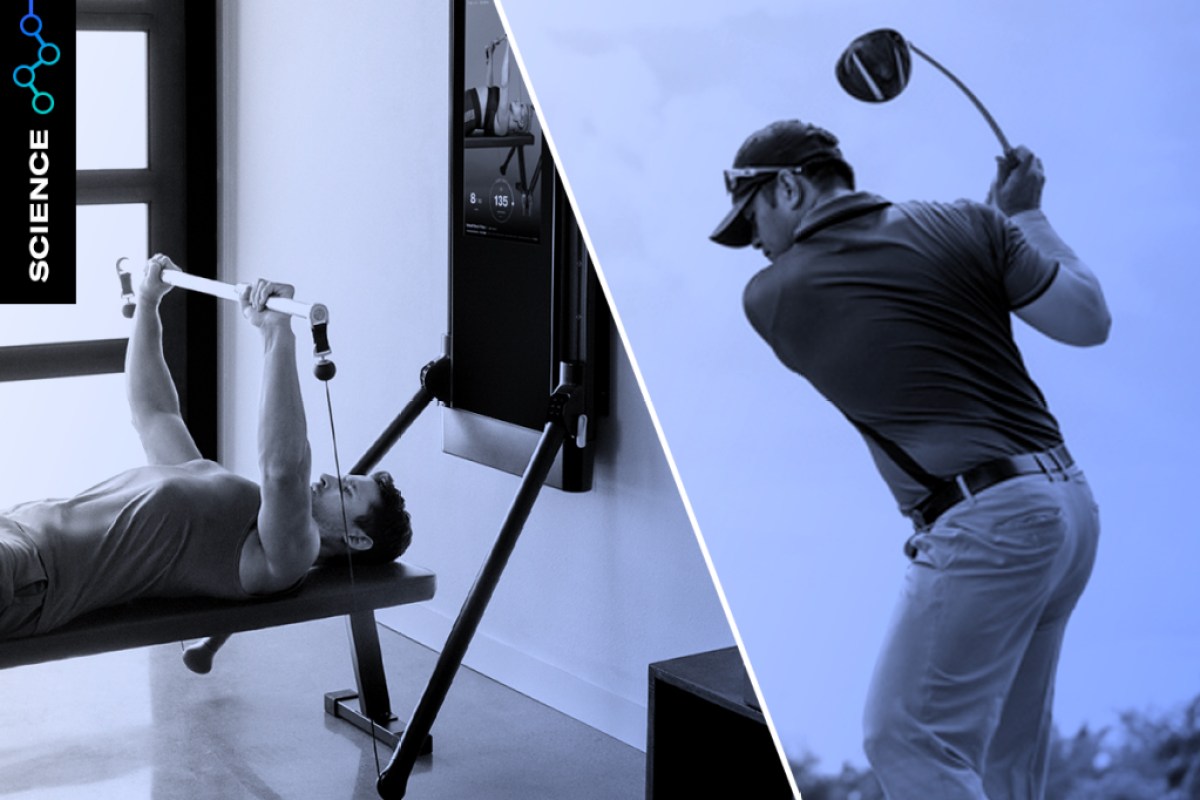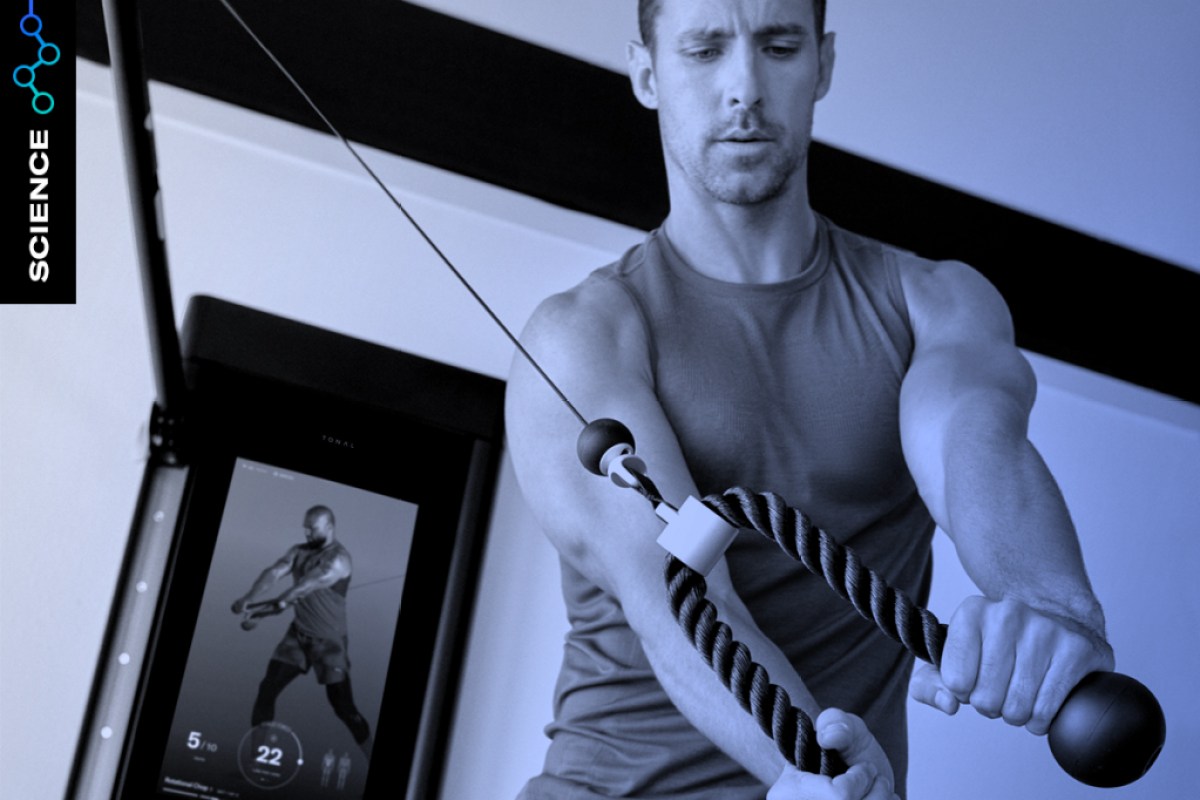How your speed plays into the weight you should be lifting right now.

- A recent study shows you can accurately predict your one rep-max (1RM) on a neutral grip deadlift based on how quickly you move lighter loads.
- The speed at which you lift on any given day is a reliable and stable metric of your current strength capabilities.
- Other studies looking at velocity of movement support this finding across a variety of exercises and populations.

The question of how heavy you should lift is one that can haunt your every workout session. Based on a recent study, one way you can judge what weight you should be working with is to simply check how fast you’re moving. In fact, how quickly you can push or pull that weight could be a good sign you’re ready to add more. And that’s the science behind how Tonal decides when to increase or decrease your suggested weight.
By tracking your velocity during exercises (hint: those Power PRs you’re getting during a workout) and applying this research, Tonal adjusts the weight in real-time either higher or lower to fit your needs that day.
In the study, published in the Journal of Strength and Conditioning Research, 22 college ice hockey players performed a 1RM test (the maximum weight you can lift in one repetition) using a hexagonal deadlift bar on their first visit. The second visit involved a progressive weight test of sets at 65-, 75-, 80-, 90-, and 95-percent of their 1RM as fast as they could with a sensor attached to the bar to measure the speed.
Based on the average speed players lifted the bar, researchers were able to accurately predict the 1RM on any given day. The relationship between load (the amount of resistance) and velocity (how fast you move the weight), something called the force-velocity curve, can expose how you can feel stronger on some days more than others, explains Bryan Mann, PhD, Assistant Professor at University of Miami and strength and conditioning expert.
“We’ve all had days where you’re looking at the bar, and you think, did I remember to put the weight on there? This feels super light. And we’ve had days where that same weight feels infinitely heavier,” says Mann. Measuring velocity, whether it’s eyeing the power meter on Tonal or checking in with yourself on how quickly you’re moving the weight, is a strong indicator of whether you can choose to add on or think about scaling back.

While this study included only elite athletes and focused on the hexagonal bar deadlift, other research supports these findings in a traditional deadlift, upper body exercises, and half-squat max strength in beginner lifters.
“Velocity is a stable metric to assess current strength capabilities,” adds Tony Giuliano, a certified strength and conditioning specialist and Performance Manager at Tonal. “When you’re fatigued, you move slower. When you’re fresh, you move faster, and you can adjust your training program for the day accordingly,” notes Guiliano.
This study further supports the use of velocity as a tool to monitor readiness for your lift, explains Mann. “And because you’ve got the load and velocity within Tonal, on any given day, it can potentially apply appropriate and individualized training loads to optimize performance in the long-run.”


